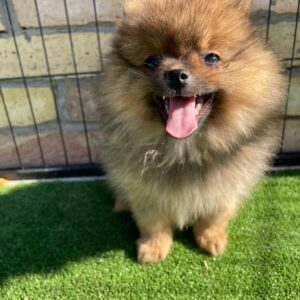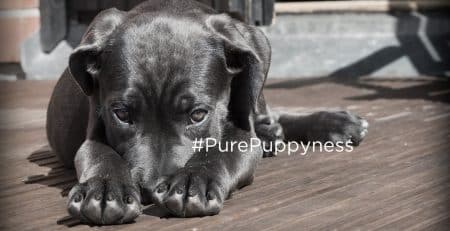History of the German Spitz
Question: What dog is fluffy, cute, and an amazing watchdog? Answer: the German Spitz. This little dog, with its fuzzy coat and curly tail, resembles a miniature Samoyed. They are beautiful little dogs with a lot of character, and are remarkably healthy.
Type or Breed?
“Spitz” is often used to refer to a type of dog. Spitz-type dogs may vary in size and colour, but all have long, thick fur, and pointed ears and muzzles, as well as a curly tail. Spitz breeds include the Akita Inu, the Chow Chow, and of course, the German Spitz.
Most modern Spitz-type breeds originated from Siberia and other Arctic regions. Spitz dogs have lived in Europe for thousands years. They lived with humans in hunter gatherer societies as far back as 6000 years ago. Skeletons of such dogs have been found in Switzerland, which were about 2000 years old. Spitz-type dogs also spread to Siberia, Mongolia, and Japan.
Northern Legend
The German Spitz’s ancestors were Nordic herding dogs such as the Samoyed and Lapphund. Legend says that these dogs came to Europe with Viking raiders. The Spitz is a miniature version of these dogs. They could be found hundreds of years later in the German provinces, where they were used as watch dogs. The little dogs would sit high up on a hillock and bark loudly if someone approached.
The forerunners of the modern German Spitz first arrived in England in the 1700s. George I of England had a German wife, and many of his descendants married German nobles. When they went to England, they brought their fluffy little dogs with them. They called these dogs Pomeranians (not to be confused with the modern Pomeranian). In later years, Queen Victoria was very fond of these little dogs.
The Fall and Rise of the Spitz
Unfortunately, the German Spitz became unpopular in Great Britain around the time of the First World War. People became fiercely patriotic and rejected anything linked to Germany or other axis countries, including German dog breeds. The German Spitz became much rarer, and didn’t regain popularity in the UK until around 1975.
Appearance
The German Spitz is a small dog, only about 29 to 36cm tall, weighing around 10kg. They come in many different coat colours, such as orange, black, brown, white, and wolf grey. The German Spitz has the typical Spitz-type characteristics: pointed muzzle and ears, curly tail, and a thick coat. This thick coat will need to be brushed regularly to prevent tangling and matting.
Personality
The German Spitz makes a fantastic pet. They are very intelligent dogs. You do need to give them something to do; otherwise they will often entertain themselves by howling, barking, or destroying the house. They tend to be noisy, a trait inherited from their days as watchdog. Good training from a young age, combined with play and exercise, will help reduce howling and barking. These little dogs are brave and bold with a taste for adventure, so they’ll be happy to run and walk with you.
Although the German Spitz is an intelligent breed, as a rule it reacts better to positive reinforcement training methods. This is not a dog that will show you unquestioning obedience. The Spitz usually gets on well with children, but make sure that your children play gently, as an overenthusiastic child could accidentally hurt the little dog.
Health
Fortunately, the German Spitz is a mostly healthy breed. Some are prone to eye problems and epilepsy and, like other smaller breeds, they may suffer from Patellar Luxation. Be sure to get your Spitz from a responsible dog breeder.

























